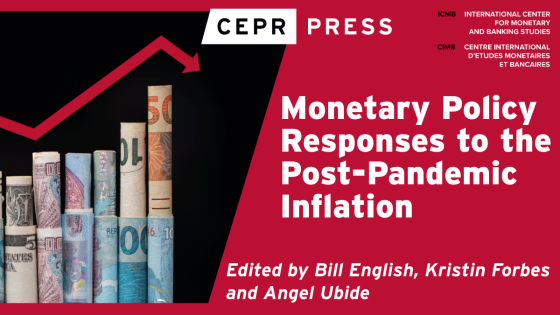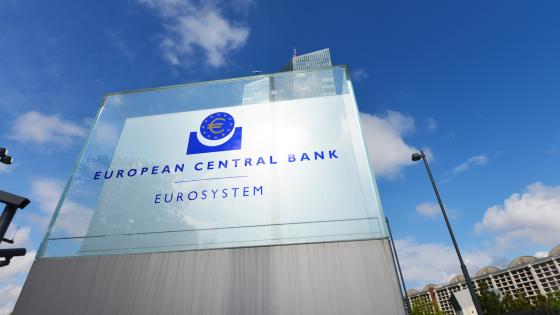The Financial Times editorial (12 April 2012, under the heading ‘Waiting for Growth’) pointed to the widespread disappointment with policies of ‘quantitative easing’ (QE). These policies have now been applied in the US, Japan, the UK, and in the Eurozone without substantial evidentiary success on an ongoing basis. G, manufacturing output, and exports are all weakening.
QE (in the USA, the UK, and Japan) is aimed at further lowering interest rates, already at historically low levels, in order to increase credit growth and to raise private investment. In the Eurozone the QE policy is entirely ‘defensive’, seeking to placate financial markets periodically when public debt and interest rates rise mainly due to the annual bond financing of on-going budget deficits.
Consumer demand deficiency and risk aversion, rather than high policy interest rate costs, are the main sources of the deflationary tendency in many countries.
Equally, ‘fiscal austerity’ policies are generally proving to be counter-productive, adding to budget deficits and public debt through lower income tax revenues and contracting output.
Today, QE and austerity policies are operating like the failed gold standard and the balanced budget policies pursued in the late 1920s (McCulley 2012).
The Financial Times editorial has raised a glimmer of hope. The editorial states that ‘more radical options – involving direct monetisation of spending – are finally being discussed’. This reported development has passed by largely unremarked but, if true, it represents a potential policy breakthrough, one that is long overdue. This development raises the prospect that policy orthodoxies that were appropriate in the past, but are no longer relevant to today’s changed economic circumstances, may finally be jettisoned. This would allow new policy paradigms to address the dual problems of today – spiralling public debt and deficient demand. This could be transformational.
Those countries that are first to reject current unworkable orthodoxies and replace them with an improved, more effective monetary and fiscal policy strategy will be the first to move forward, as they will be able to create needed economic stimulus without further raising public debt.
Two policy options
There are two options in the general policy zone of ‘monetisation of spending’. Option A is a pure helicopter drop of new money by the central bank into private bank accounts or, Option B, the creation of new money to directly finance the budget deficit. Option A, however, does nothing to resolve the ‘public debt’ problem arising from on-going budget deficits, and that, and the difficulty of appropriately targeting the drop, are likely its main weaknesses. In contrast, Option B provides for targeted fiscal stimulus possibilities without increasing public debt. Under Option B there is no increase in public debt while budget deficits provide needed fiscal stimulus. Under Option B, new money can be transmitted through established fiscal policy channels to areas where it is most needed (the unemployed, those adversely impacted by economic depression, those suffering from house price collapses, public infrastructure activities, and so on), and where marginal propensities to consume and spend are greatest.
Under Option B it is first required that a money-issuing authority creates new money and, second, that the new money is made available to the Treasury. This operation needs to be done in a way that does not increase ‘public debt’: public debt is conventionally measured by ‘general government’ debt.
In the US, for instance, if the Fed created new money and sought to pass it to the US Treasury (so that the Treasury could finance the deficit) then ‘public debt’ would increase. This follows because, in exchange for the provision of the new money to the US Treasury, the Fed would need to receive new government bonds from the Treasury, and this transaction raises general government debt, the measure of ‘public debt’ relied on by credit rating agencies. This is so because the Fed is defined as an ‘outside investor’. Credit rating agencies see that government bonds held by the central bank can be sold to public at any time.
To the extent that the accounting conventions are the same in the UK as in the US, the UK Treasury, rather than the central bank, could potentially be used to create new money to directly finance the budget deficit.
The Eurozone
The case for deficit monetisation is also pressing in periphery countries, whether they stay inside the Eurozone or leave it.
It is increasingly clear that the current German economic philosophy – fiscal austerity and internal deflation – has contributed to unhealthy fiscal deficits (as income tax revenues have fallen due to income destruction not due to tax rate reductions). These policies are contributing to the widening recession in many northern Eurozone countries, and to deepening depressions in most periphery countries.
Urgent and decisive adjustments and policy reversals are now required to avert a widening disaster.
In order to reverse the current slide into economic disaster it will be necessary for the German government, in particular, to adjust its economic philosophy.
This will require that the emphasis on short-term austerity will need to be adjusted and greater emphasis put on slower medium-term fiscal consolidation. Public expenditure is too high relative to GDP and public debt must be brought back down over time. But in the short term, greater fiscal stimulus is necessary.
The German government and taxpayers have recently shown that there are limits to its ability to go on bailing-out periphery countries.
In this context ‘deficit monetisation’ should be seen as a potential godsend. Public debt in the periphery countries will stop rising immediately the policy is implemented. As a consequence, Germany will no longer be under such pressure to bailout the southern countries. Deficit monetisation will immediately take pressure off German taxpayers and the German government.
Inflation
Underpinning the German economic philosophy is a concern that if the money issuing authority financed budget deficits there would be a rise in inflation, and hyperinflation would follow. This view is based on the German experience in the 1920s.
It does not necessarily follow that the mistakes and excesses that led to the German hyperinflation in the 1920s would be repeated today.
In the US, Japan, the UK, and the Eurozone, recent monetary expansions through QE have not resulted in substantial inflation or hyperinflation.
Under Option B there is no risk of high inflation as, once the fiscal stimulus is delivered and the multiplier is operating, the new money can be sterilised (removed from the economy) if and when excess liquidity ever became a problem. As well, a legislative cap could be placed on the policy in advance.
Not radical
It is somewhat puzzling that the current generation of economists and journalists view the helicopter drop or deficit monetisation as ‘radical approaches’. Maynard Keynes (1933), Abba Lerner (1943), Milton Friedman (1948 and 1969), Ben Bernanke (2002) and, most recently, Willem Buiter (May 2012) have all advocated this general approach, certainly in relation to deflation. Ugolini (2011) has concluded that deficit monetisation has worked in the past and is not evil. The case for its application is even greater in current circumstances where there are two concurrent problems: high public debt and deflation.
Using new money to finance public deficits for the people (see Kaletsky et al. 2012) is no more radical than using new money to finance banks and increase their reserve accounts at the central bank (as with QE).
Macroeconomic policy coordination must get ahead of the unfolding crisis and work to resolve high public debt and deficient growth problems. Public demand must fill the void until private demand picks up.
Editors' note: The writer is an Australian macroeconomist.
References
Bernanke, Ben (2002), “Deflation: Making Sure ‘It’ Doesn’t Happen Here”, Remarks before the National Press Club, Washington D.C., February.
Buiter, Willem and Ebrahim Rahbari (2012), “What more can central banks do to stimulate the economy”, Global Economics View, Citi, 9 May.
Financial Times, Editorial (2012), ‘Waiting for growth’, 12 August.
Friedman, Milton (1948), “A Monetary and Fiscal Framework for Economic Stability”, June. Also see Optimum Quantity of Money, Aldine Publishing Company, 1969.
Kaletsky, Anatole (2012), “Suddenly, quantitative easing for the people seems possible”, Reuters, 9 August.
Keynes, John Maynard (1933), “Open letter to President Roosevelt”.
Lerner, Abba (1943), “Functional Finance and the Federal Debt”, Social Research, 10 February.
McCulley, Paul and Zoltan Pozsar (2012), “Does Central Bank Independence Frustrate the Optimal Fiscal-Monetary Policy Mix in a Liquidity Trap”, Global Society of Fellows, 26 March.
Ugolini, Stefano (2011), “What future for central banking? Insights from the past”, VoxEU.org, 11 December.
Wood, Richard (2012), “Delivering economic stimulus, addressing rising public debt and avoiding inflation”, Journal of Financial Economic Policy, April.
Wood, Richard (2012), “The ECB: Whatever it Takes to Preserve the Euro”, RGE EconoMonitor, July.


